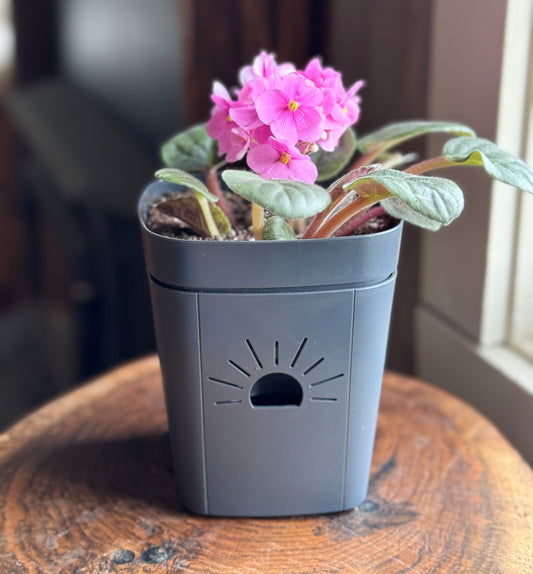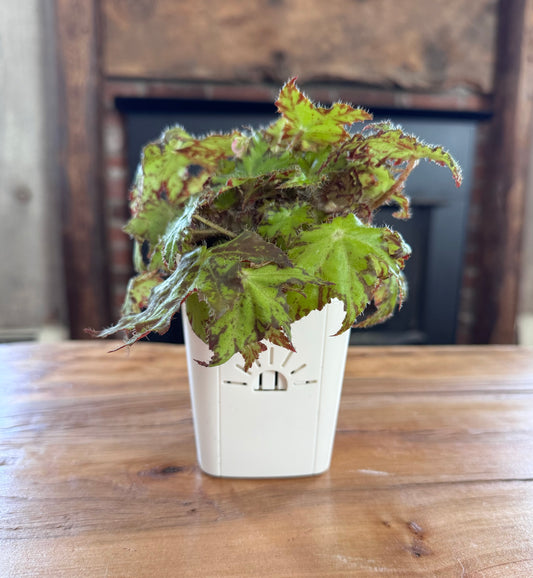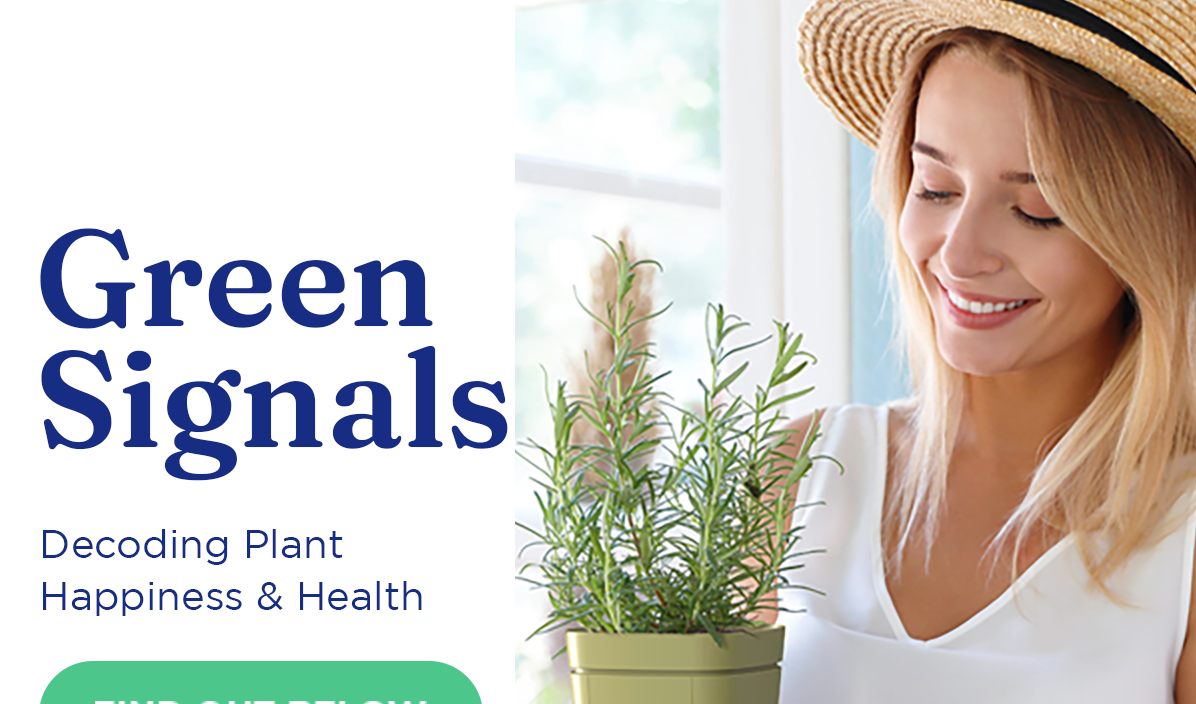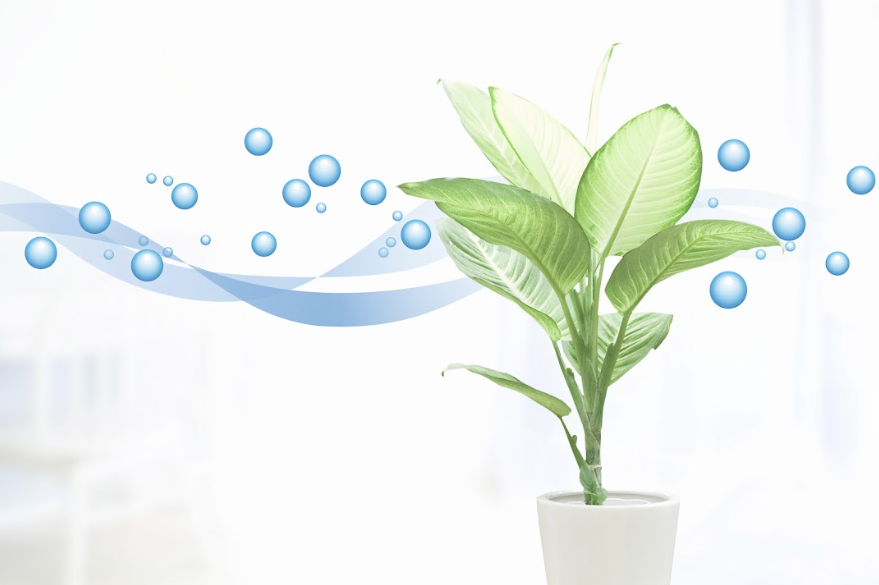Origins
Ferns are some of the more interesting houseplants that you can grow. Most ferns produce fiddleheads that slowly uncoil or unroll and expand into a new frond. Everything about the lifecycle of a fern is fascinating. Spores grow by cell division to form a gametophyte. This gametophyte contains both sperm and egg. Once fertilized, the egg is a zygote that grows into a new fern plant. Amazing!
Ferns have been around for 360 million years, with evidence of certain modern ferns appearing during the Triassic. A large number of modern fern families emerged during the late Cretaceous period (145 million years ago), known as the “great fern radiation.” Ferns were originally categorized in the Class Filices. However, modern classifications have placed them in their own division of the plant kingdom known as Pteridophyta.
Light
Requirements
The majority of ferns that we grow as houseplants originated from rainforests, growing either on the forest floor or as epiphytes attached to mossy trees. As a result, most ferns are happy with medium indirect light. They can tolerate very low light conditions but will not thrive. Medium to bright filtered (not direct) light is best.
Genus Summary
| GENUS | Fern |
| COMMON NAMES | Bracken Fern, Christmas Fern. |
| LIGHT | Low to medium indirect, filtered light |
| WATER SCHEDULE | 7 days |
| WATER REQUIREMENTS | Keep the soil continually moist as a squeezed-out sponge, not soggy. |
| HUMIDITY | High |
| TEMPERATURE | Above 50°F at all times |
| FEEDING | 1x month |
| TOXICITY | The varieties kept as houseplants are non-toxic to humans, and animals |
| PESTS | Aphids, mealybugs, root-knot nematodes, fungus gnats |
| DISEASES | Pythium root rot, and Rhizoctonia aerial blight |
| POT | One with a bottom-watering reservoir |
| SOIL | A rich blend of peat moss, sand, compost, and potting soil. |
| FERTILIZER | Half-strength liquid fertilizer in spring and summer only |
| PROPAGATION | By division or offsets |
| PRUNING | Not needed |
| SIZE | 12 inches to 5 feet |
Water Requirements
If you are using a Naked Root planter, you can happily follow a 7-day watering schedule for your fern.
When using a traditional planter pot, water when the top 1.5 inches of soil feels dry. The soil should never be allowed to dry out completely. If you wet a sponge and squeeze it nearly dry, this is the ideal soil moisture level for most indoor ferns.
Humidity
Ferns love high humidity. As a general rule, the smaller the ferns’ leaves, the more humidity it needs. Tiny-leaved varieties like maidenhair, Boston, and button fern suffer from dry air. Their leaves turn brown and fall off, making the whole plant look rather pitiful. Large-leaved ferns or those with long strappy leaves, like bird’s nest ferns, still like humidity but are more tolerant.
Temperature
When it comes to temperature, most ferns can handle a wide range of temperatures and even thrive in warm climates. However, they are not able to survive chillier temperatures and need to be kept at least 50°F or higher.
Although some species are exceptions and can tolerate chilly conditions, these ferns likely won’t be found in the average household. At any rate, the average indoor temperatures usually don’t drop below 50°F.
When caring for your ferns, keep them away from cold drafts or windowsills, which could cause their leaves to become damaged or die off completely. Additionally, ensure you provide sufficient humidity during winter, so your plants remain healthy and vibrant!
Toxicity
Most fern types grown as houseplants are non-toxic to animals and humans. In fact, many outdoor fern varieties, like ostrich fern, are commonly eaten in the spring and cooked like green beans.
Bracken ferns are poisonous but are not grown as houseplants.
One plant is often mistaken for a fern – the asparagus fern (not a fern at all) is toxic to dogs and cats due to sapogenin, a type of steroid it contains. Asparagus fern is also irritating to humans and can cause dermatitis.
Pests and Diseases
Ferns are not bothered by too many pests. If insects do show up, they are usually aphids, mealybugs, or root-knot nematodes. If you take your indoor ferns outdoors for summer, beware that many caterpillars find ferns delicious. One type of cutworm is known for eating Boston ferns right down to the soil level overnight. You can prevent this by releasing Bacillus thuringiensis (the variety kurstaki) onto your ferns before setting them outdoors for summer. The beneficial organisms will defend your fern from caterpillars all summer.
Another common pest is fungus gnats. Because ferns like moist soil, this makes the perfect breeding ground for gnat larvae. Using a pot with a bottom watering reservoir will prevent fungus gnats.
Pythium root rot is the most common disease to plague ferns grown indoors. If you notice your fern turning grey, Pythium is the likely cause. Another less common fungus is Rhizoctonia aerial blight. This disease causes dark spots or lesions on the leaves of the fern.
Pot
Choose a type of pot that lets you water your fern from below. Pots with a water reservoir are perfect for ferns, especially when fertilizing, as fertilizers can burn their delicate leaves and fronds.
Soil
Because the types of ferns grown as houseplants mainly originate from luscious rainforests, they prefer a rich soil blend. A soil blend that contains peat moss, sand, compost, and potting soil is the perfect mixture of water retention and drainage that ferns require.
Fertilizer
Diluted liquid fertilizers are best for ferns. It is best to feed them from the bottom, allowing the fern to drink from the roots so the fertilizer doesn’t burn the fronds. Dilute any fertilizer to half-strength and use only during the spring and summer.
Propagation
The simplest way to propagate ferns is by division. Use a sharp knife to divide a large fern into one or more sections, ensuring each section has a large piece of roots attached. They will recover from this surgery best if you perform it in the spring.
Many ferns will start producing offsets when they are tightly potbound. These fernlets can be easily separated from the parent plant and potted individually.
A few types of ferns will produce runners (called stolons). Clip them at the base of the parent plant and replant them in a new pot.
Pruning
Ferns don’t require hardly any pruning. You can snip off dead, brown leaves to tidy up the plant. This trim will help the fern redirect its energy to growing fresh new fronds.
10 Striking Varieties and Cultivars
Add a natural, green vibe to your interior space with ferns. Grown for their interesting leaves and soothing qualities, there are many benefits to keeping ferns as houseplants. Here are a few of our favorite varieties from this enormous plant family.
Boston Fern – Nephrolepis exaltata – This type of fern is popular and easy to find in garden centers. The fronds are long and have thin, sword-shaped leaves. It is easy to take care of and find, making it a great choice if you want to include ferns in your home. You can put the Boston fern in a hanging pot or a basket on a table or shelf in a room with lots of indirect light. It is one of the most tolerant of all the ferns when it comes to low light conditions.
Staghorn fern – Platycerium – Staghorn ferns are famous for their unique fronds resembling moose antlers. They are epiphytes, meaning they grow on other trees in the wild. You can find them planted in pots of soil in nurseries or online shops or mounted on wood. These plants produce two types of fronds. The antler-shaped ones and the shield fronds that surround the root system. It’s normal for the shield fronds to dry out and become hardened. To water staghorn ferns, submerge the roots and board in water for 10-20 minutes or pour water into the pot’s reservoir, soaking the root ball. Allow the fern to drip dry before rehanging. If you’re looking for something unique and eye-catching, this might be the perfect plant for you!
Lemon Button Fern – Nephrolepis cordifolia ‘Duffii’ – The attractive and rounded leaves of this fern and its slight lemony scent make it a delightful addition to any space. It is more forgiving and easier to care for than other fern varieties (we’re pointing at you, Maidenhair fern), making it an ideal choice for those who are not very confident in their gardening skills. This fern is quite adaptable in terms of light and is much more tolerant of water fluctuations than many of its relatives. Therefore, it is an excellent option as it can thrive despite occasional over-watering or dry spells. All in all, this plant is a great choice for anyone looking for a low-maintenance yet beautiful houseplant.
Crocodile Fern – Microsorum musifolium ‘Crocydyllus’ – You can identify this distinct fern by its broad, flat leaves with a special crocodile-skin pattern. Each leaf grows from a central rosette and can reach an astonishing 5 feet long. Similarly to the staghorn fern, it is an epiphyte, but it is content in a pot. To keep it healthy, maintain the soil consistently damp and provide lots of moisture. You have the option of mounting it if you prefer, but keep in mind the eventual size.
Bird’s Nest Fern – Asplenium nidus – This type of fern has a light green hue with a ruffled pattern shaped like a rosette. In the wild, it often grows in palm trees. Bird’s nest ferns get quite large, even indoors. The average indoor size is 3-4 feet wide at maturity, with individual fronds reaching three feet or longer. It does best planted in a pot, and if allowed to become rootbound, it will produce dozens of tiny plantlets that you can plant separately. Although it prefers moist soil, it’s still resilient enough to handle occasional dryness. When watering, make sure not to pour water directly into the center of the plant, as the area is very fragile.
Silver Brake – Pteris cretica – Also called ribbon fern and moonlight fern, this species is slow-growing and will eventually reach 24 inches tall and wide indoors. It has arching fronds that grow in a clump from an underground rhizome, making it look somewhat like bamboo. The foliage is slender and has a lovely delicate texture that stands out from other ferns. There are solid green, striped, variegated, and ruffly-edged cultivars.
Kangaroo Paw – Microsorum diversifolium – For those with difficulty keeping ferns alive, a kangaroo paw fern may be a great option. These plants are relatively tolerant and quick-growing, and their mature leaves look like a kangaroo’s foot. With proper care and growing conditions, the bright green and shiny leaves will become full and thick. Indoors, they can reach up to 12 inches tall and four feet wide. Additionally, their furry rhizomes underneath the soil are somewhat drought-resistant compared to other fern varieties.
Rabbit’s Foot Fern – Davallia solida ‘fejeensis’ – The rabbit’s foot fern, also known as the hare’s foot fern, originates from tropical regions and can be grown in containers or hanging baskets. You can propagate this fern easily due to its unique rhizomes, which are similar to a fuzzy rabbit’s foot. The rhizomes spread over the potting medium and produce fronds at intervals. To propagate, you can simply cut off a section of the rhizome with leaves and place it in a different pot. Be sure to display this fern so the beautiful furry rabbit’s feet can flow over the sides of the pot.
Autumn Fern – Dryopteris erythrosora – Another nickname for this fern is copper shield fern because new fronds emerge a brilliant coppery red color. Mature fronds are bright green with golden tips. Like lace, each leaf is finely lanced and looks lovely in a hanging basket or pot. It grows wider than it does tall, usually 18 inches tall by 2 feet wide.
Phlebosia’ Nicolas Diamond’ – This lovely cultivar is a hybrid mix between Pyrrosia and Phlebodium. It has long arching stems and rich, green fronds. Each leaf is curled and wavy and looks impressive when dangling over the edge of a hanging basket. This fern grows vigorously and quickly reaches its mature size of 36×36. It is more tolerant of low humidity and cool temperature than a lot of other ferns and is a good starter for beginners.
Summary of Ferns Plant Care
Ferns are easy-to-care-for and attractive additions to any home. They prefer indirect light, high humidity levels, and moist soil. Water your fern regularly but avoid overwatering as this can lead to root rot. Additionally, fertilizing during the growing season will help keep it healthy and happy. Prune any brown tips or dead fronds from the plant by cutting them off near the base of the plant using sterile scissors or clippers. Proper care gives you a beautiful fern that adds beauty and life to your home for up to 100 years!





 Verified Buyer
Verified Buyer








